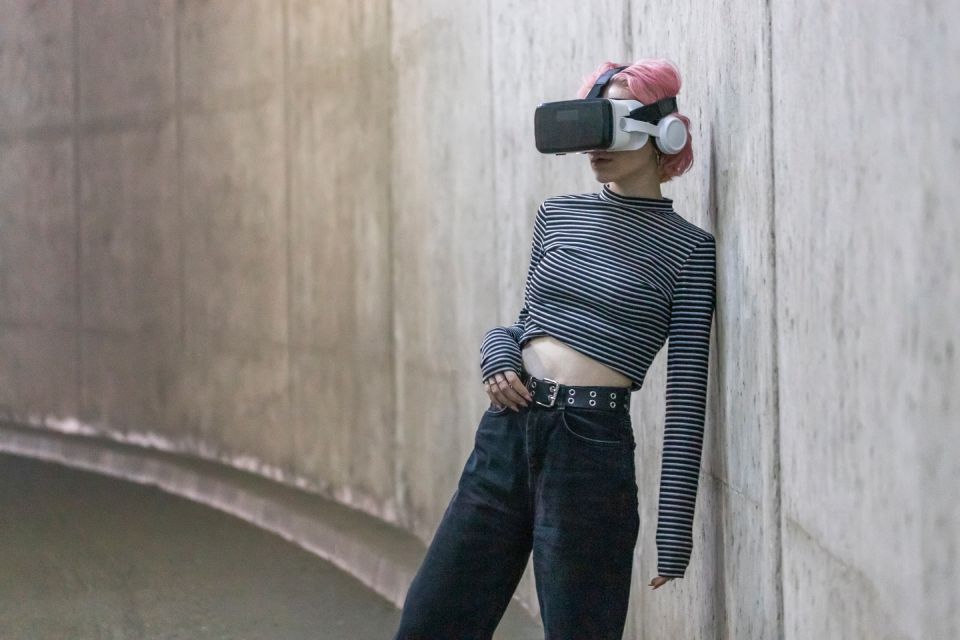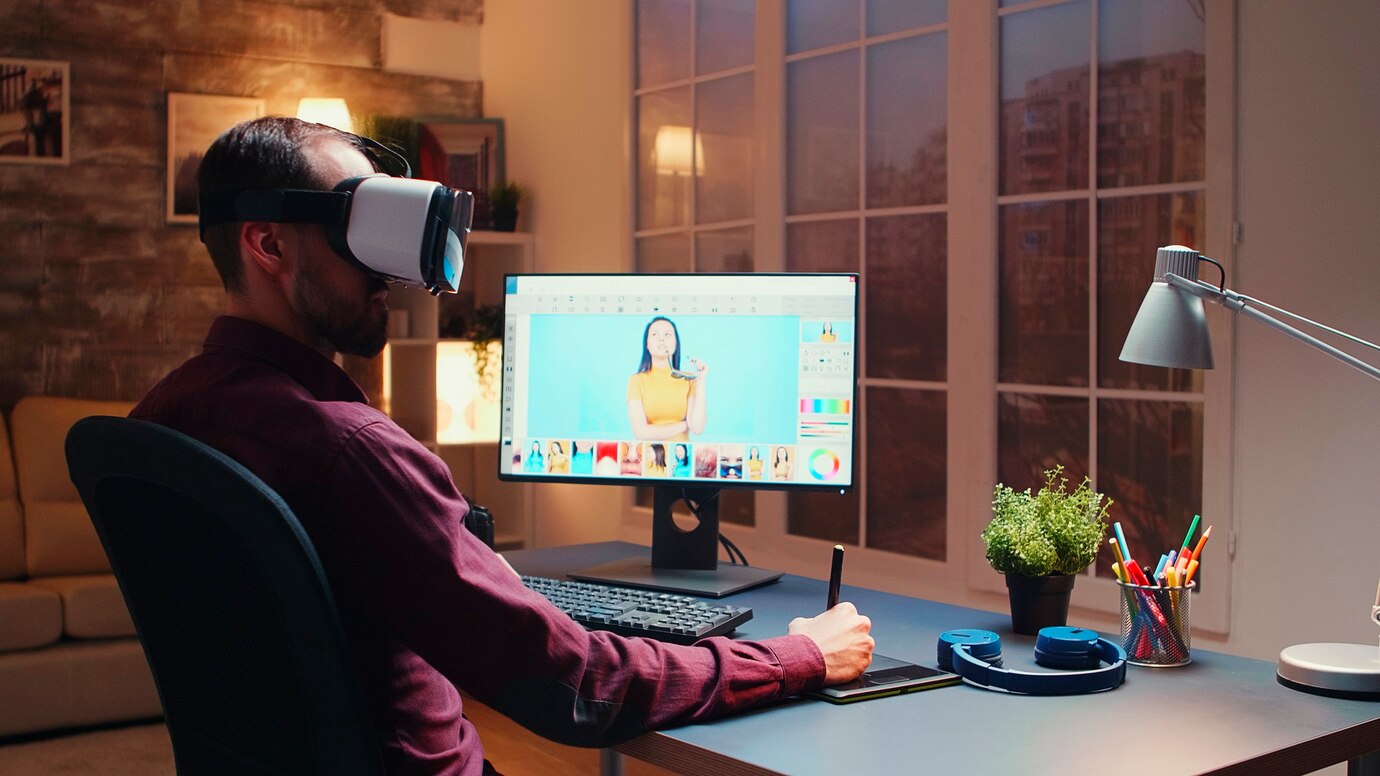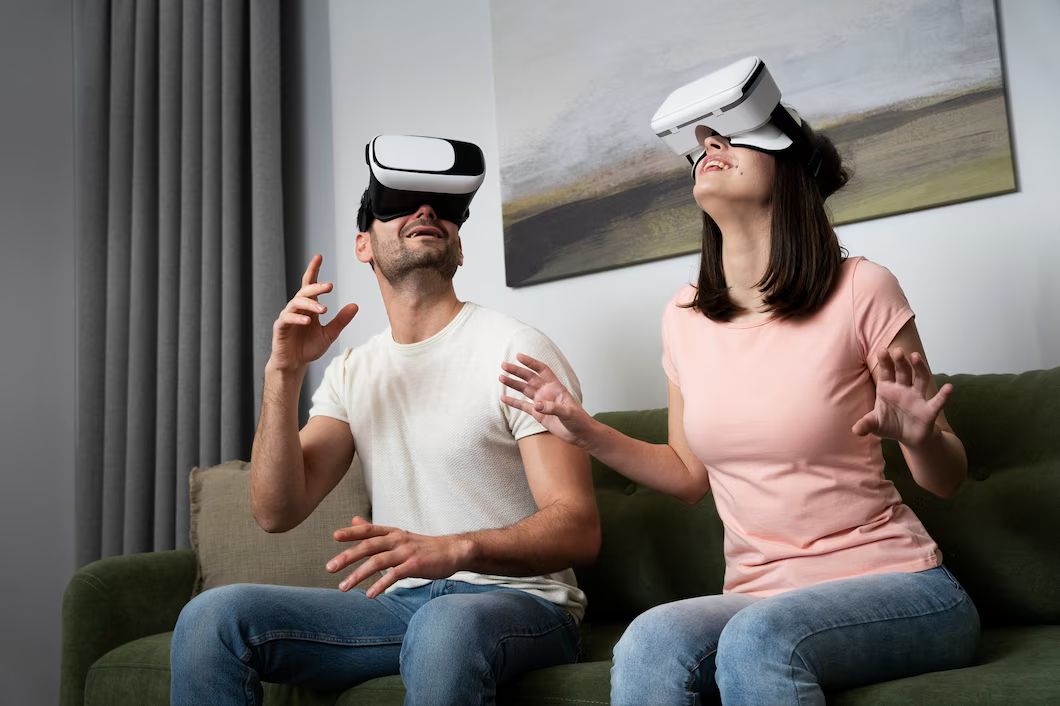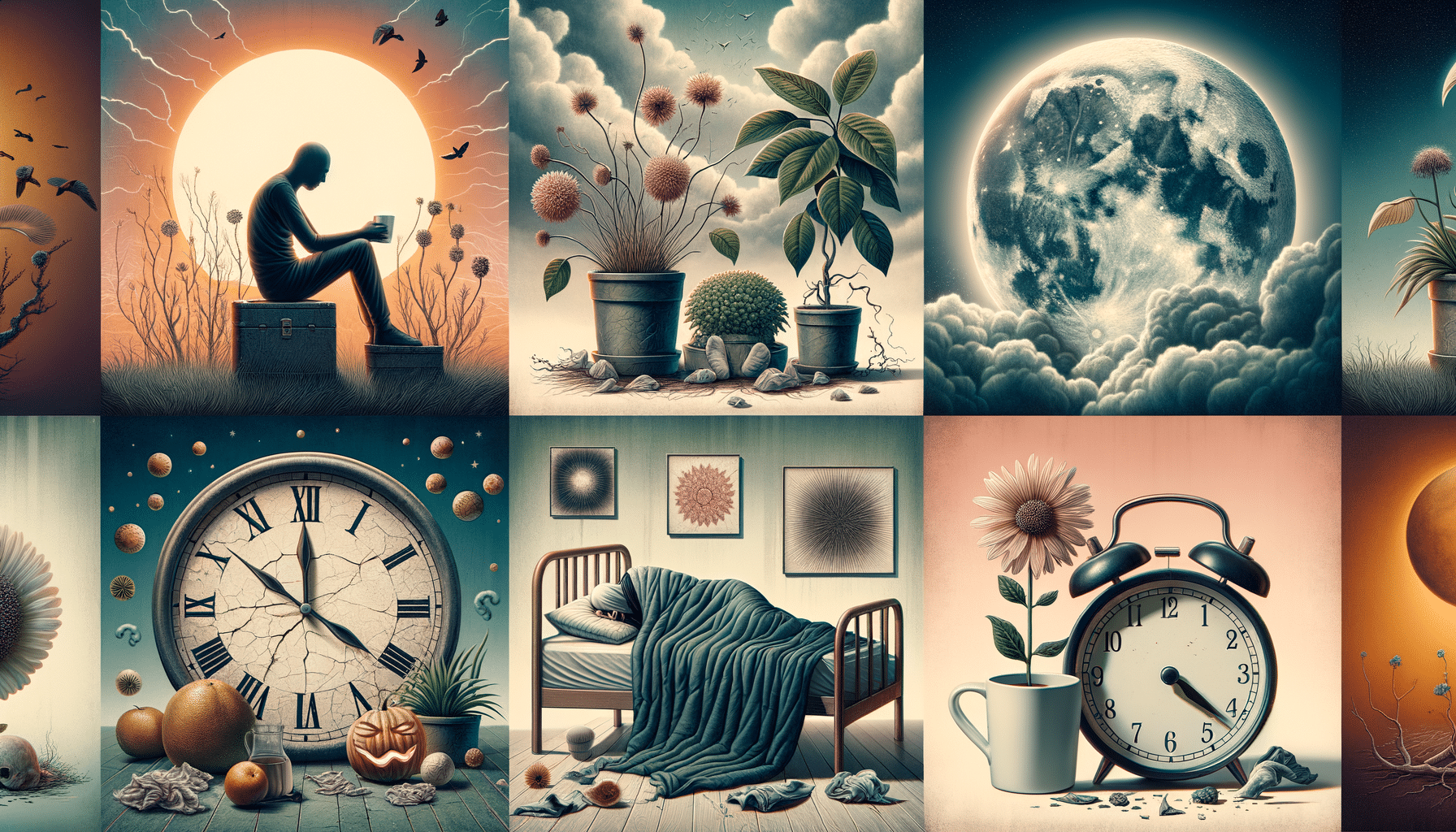
The Impact of Virtual Reality & Augmented Reality in Fashion
In this digital age, Virtual Reality (VR) and Augmented Reality (AR) fashion are transforming how consumers shop, designers engage with their audiences, and brands engage with their audiences. As technology evolves, virtual shopping trends bridge the physical and digital fashion worlds, delivering powerful experiences over the years.
This article explores how VR and AR are reshaping the fashion world, the most critical applications and benefits of VR and AR in the fashion field, and the future of digital fashion.
Understanding VR & AR in Fashion
Before diving into their impact, it’s essential to understand the differences between Virtual Reality (VR) and Augmented Reality (AR) in fashion.
What is Virtual Reality in Fashion?
VR fashion creates fully immersive digital environments where users can experience clothing, runway shows, and shopping in a simulated world. Users must wear VR headsets like the Meta Quest, HTC Vive, or PlayStation VR to enter virtual stores, fashion metaverses, or design studios.
Through VR, brands can construct entirely digital showrooms, fashion exhibitions, and immersive retail spaces, allowing customers to interact with products in previously unimaginable ways.
What is Augmented Reality in Fashion?
AR fashion overlays digital elements in the real world using smartphones, tablets, or AR glasses. Consumers can see how clothes look on them virtually through AR mirrors, filters, and try-on apps, making online shopping more interactive and convenient.
Unlike VR, which transports users to a virtual world, AR enhances reality by adding interactive digital components to physical surroundings, making it a powerful tool for personalisation and convenience in fashion retail.
The Rise of Virtual Shopping Trends
With the rise of e-commerce, brands are leveraging VR and AR to create engaging shopping experiences that bridge the gap between physical and digital retail.
Virtual Try-Ons: Enhancing Online Shopping
One of the biggest challenges in online fashion is the inability to try on clothes before purchasing. AR-powered virtual try-ons allow users to:
- See how outfits fit and move before making a purchase.
- Experiment with different styles without physically wearing them.
- Try on accessories like sunglasses, jewellery, and makeup via AR filters.
- Brands like Zara, Gucci, and Nike have integrated AR try-on features into their apps, reducing return rates and increasing consumer confidence in online purchases.
VR Shopping: The Future of Retail
VR fashion stores provide an immersive shopping experience where users can:
- Walk through virtual boutiques and browse products in 3D.
- Interact with AI-powered fashion assistants for personalised recommendations.
- Attend virtual pop-up stores and limited-edition drops from global designers.
- Pioneering companies such as Balenciaga and Tommy Hilfiger have launched virtual flagship stores, allowing customers to explore digital showrooms anywhere.
The Role of AI in Virtual Shopping
AI-driven fashion assistants in VR and AR retail environments analyse customer preferences, suggest outfits, and provide real-time feedback. This level of personalisation enhances the shopping experience and makes digital retail as effective as in-store interactions.
Virtual Reality in Fashion Shows & Runways

The Rise of Virtual Runway Shows
The COVID-19 pandemic accelerated the shift toward digital fashion weeks, with designers embracing VR and AR to present collections. Virtual runway shows allow brands to:
- Showcase digitally rendered outfits in fully immersive environments.
- Reach a global audience without physical venue limitations.
- Reduce the environmental impact of traditional runway productions.
- Fashion giants like Dolce & Gabbana, Balmain, and Louis Vuitton have experimented with VR catwalks, pushing the boundaries of creativity and accessibility.
Augmented Reality in Fashion Events
AR enhances live fashion shows by overlaying digital elements in real-time. Spectators can use AR glasses or smartphone apps to:
- View interactive holograms of garments changing in real-time.
- Access behind-the-scenes content about fabrics, designers, and inspirations.
- Experience customised front-row perspectives from any location.
The Role of VR & AR in Fashion Design & Production

Digital Prototyping & 3D Fashion Design
VR is revolutionising fashion design by enabling 3D garment visualisation and virtual prototyping. Designers can:
- Create digital patterns without using physical fabrics, reducing waste.
- Experiment with different textures, cuts, and colours in a VR studio.
- Collaborate with teams remotely using cloud-based fashion software.
Brands like The Fabricant and DressX specialise in digital-only fashion, designing clothing purely in virtual spaces worn by avatars in the metaverse.
Sustainable Fashion Through AR & VR
Sustainability is a pressing concern in the fashion industry, and AR and VR technologies are helping brands reduce their environmental footprint.
- Virtual Sampling: Reduces material waste by eliminating unnecessary physical prototypes.
- Digital Fashion Shows: Decrease carbon emissions associated with travel and logistics.
- Smart AR Tags: Allow consumers to scan garments for detailed sustainability information.
Companies like Stella McCartney and Adidas are integrating VR into their sustainability initiatives, reducing excess production and minimising textile waste.
Challenges & Ethical Considerations in VR & AR Fashion
Despite its exciting potential, VR and AR fashion face several challenges:
Technical & Accessibility Barriers
- High Cost of VR Equipment: Not all consumers can afford VR headsets or AR glasses.
- Internet & Hardware Limitations: Some experiences require high-speed connections and powerful devices.
- Learning Curve: Older generations may struggle with adapting to virtual fashion platforms.
Digital Fashion Ownership & Security
- NFT Authentication: Digital fashion pieces are sold as NFTs (non-fungible tokens), but issues like fraud and piracy remain concerns.
- Privacy Risks: AR shopping apps collect biometric data, raising ethical concerns over consumer privacy.
- Over-Reliance on Technology: Some fear digital fashion could decrease appreciation for craftsmanship in traditional garment-making.
The Future of VR & AR in Fashion

Looking ahead, VR and AR will continue to shape fashion in exciting ways:
Emerging Trends
- Fully Immersive Virtual Malls: Users will shop in expansive digital environments, replicating real-world stores.
- AI-Powered Smart Mirrors: Interactive mirrors with styling recommendations and real-time size adjustments.
- Holographic Fashion Displays: Retail stores will showcase clothing collections in 3D holograms instead of traditional mannequins.
- Metaverse Fashion Weeks: Digital fashion events will be hosted entirely in virtual worlds like Decentraland and The Sandbox.
Final Thoughts: The Digital Fashion Revolution
That all comes despite the evolution of new styles and designs in digital and augmented reality fashion. The future of fashion has as much to do with technology as with fabric, with everything from virtual catwalks and digital haute couture to AR-enabled shopping experiences.
Brands adopting these innovations will be ahead of the curve in virtual shopping trends and offer consumers a more sustainable, affordable, and engaging global fashion experience. Welcome to the dawning age of digital-first fashion—are you ready to embrace the future?


